R.J. Stowell's Blog: rjsomeone, page 29
March 27, 2020
READ miles from nowhere FREE!
That's FREE FREE! You heard right. Read R.J. Stowell's miles from nowhere FREE on your Kindle. NOW!
miles from nowhere is the prequel to Calif. Read it free while you can.
Here's the link: miles from nowhere
miles from nowhere is the prequel to Calif. Read it free while you can.
Here's the link: miles from nowhere
Published on March 27, 2020 19:44
Close to the Edge (AM10)
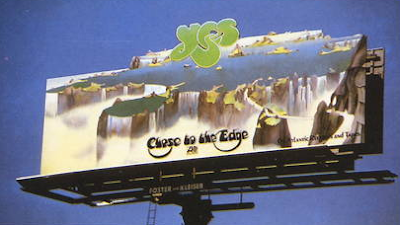 Another of Bill's Signs - One of my father's favorites.Close to the Edge is the zenith of fantasy rock, with all the stars aligned. It's all here - power, pretension, indulgence, bombast, grandiloquence, grace, conspicuousness, beauty - blended into one daring, majestic, ridiculously beautiful LP. Antonin Dvorak, meet the Beatles. This was Yes' high watermark and their most ambitious and cohesive album. For the third record in succession, Yes proved critics wrong in their generalized assessment of the band's chosen genre as emotionless, dry and empty. 40 years on, it's as crisp as a fresh head of lettuce. And the ease in which the quintet accomplished the extreme dynamics and shifting meters is mind-boggling.
Another of Bill's Signs - One of my father's favorites.Close to the Edge is the zenith of fantasy rock, with all the stars aligned. It's all here - power, pretension, indulgence, bombast, grandiloquence, grace, conspicuousness, beauty - blended into one daring, majestic, ridiculously beautiful LP. Antonin Dvorak, meet the Beatles. This was Yes' high watermark and their most ambitious and cohesive album. For the third record in succession, Yes proved critics wrong in their generalized assessment of the band's chosen genre as emotionless, dry and empty. 40 years on, it's as crisp as a fresh head of lettuce. And the ease in which the quintet accomplished the extreme dynamics and shifting meters is mind-boggling. 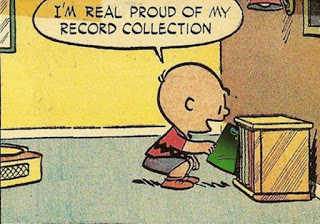 The music can be tense and unyielding one moment, cavernous and spacey the next. And not a seam showing. A novella could be written about the title track alone, which cultivates more ideas than most bands have in its career. The intro is a kinetic locomotive that dances dangerously close to jumping the tracks, followed by a tightly wound verse and a sweet yet powerful Jon Anderson vocal. Mid-way through, Anderson takes to repeating the dreamy "I get up, I get down" mantra, calming, soothing, until the skies open into a rhapsodic keyboard soliloquy by Rick Wakeman. The band reawakens, plowing into an intricate combative groove featuring another Wakeman solo that rivals his brilliant turn on Fragile's "Roundabout." But it's Steve Howe who drives this airship. His fusion of chops, innovation, and instinct contradicts any allegations of dispassionate precision. It's Howe who also takes front and center on track two, "And You and I," with his lush 12-string acoustic work. Wonderful melodies and a gradual building of mood from soft and meditative to gloriously exalted, layer upon layer, slowly adding elements of sonic complexity. "Siberian Khatru" evolves from an uncomplicated theme that expands to an apex of pointed dissonant harmonies and a double-time coda of frantic but agile jamming. Top it off with Squire's inimitable fretless bass and the brilliance of Bill Bruford's drums. The album is indeed as bombastic as this article: overblown, gorgeous, compelling. The best album of a band’s canon is often called its "Sgt. Pepper." For the whole of the prog genre, the Sgt. Pepper may be Close to the Edge.
The music can be tense and unyielding one moment, cavernous and spacey the next. And not a seam showing. A novella could be written about the title track alone, which cultivates more ideas than most bands have in its career. The intro is a kinetic locomotive that dances dangerously close to jumping the tracks, followed by a tightly wound verse and a sweet yet powerful Jon Anderson vocal. Mid-way through, Anderson takes to repeating the dreamy "I get up, I get down" mantra, calming, soothing, until the skies open into a rhapsodic keyboard soliloquy by Rick Wakeman. The band reawakens, plowing into an intricate combative groove featuring another Wakeman solo that rivals his brilliant turn on Fragile's "Roundabout." But it's Steve Howe who drives this airship. His fusion of chops, innovation, and instinct contradicts any allegations of dispassionate precision. It's Howe who also takes front and center on track two, "And You and I," with his lush 12-string acoustic work. Wonderful melodies and a gradual building of mood from soft and meditative to gloriously exalted, layer upon layer, slowly adding elements of sonic complexity. "Siberian Khatru" evolves from an uncomplicated theme that expands to an apex of pointed dissonant harmonies and a double-time coda of frantic but agile jamming. Top it off with Squire's inimitable fretless bass and the brilliance of Bill Bruford's drums. The album is indeed as bombastic as this article: overblown, gorgeous, compelling. The best album of a band’s canon is often called its "Sgt. Pepper." For the whole of the prog genre, the Sgt. Pepper may be Close to the Edge. 
Published on March 27, 2020 07:35
March 25, 2020
Miles and Miles and Miles
Published on March 25, 2020 06:50
March 24, 2020
The Hounds of Love
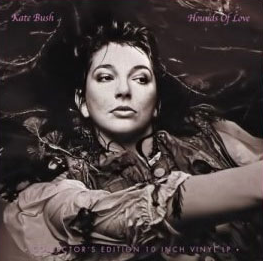 1985 was a coming of age musically for the 80s. From Meat is Murder to Tom Waits’ phenomenal Raindogs to The Waterboys and Prefab Sprout, 1985 outshines any other year in the decade thus far.
1985 was a coming of age musically for the 80s. From Meat is Murder to Tom Waits’ phenomenal Raindogs to The Waterboys and Prefab Sprout, 1985 outshines any other year in the decade thus far. Comparisons to Peter Gabriel's third eponymous LP were inevitable. Kate Bush, like friend and sometime collaborator Gabriel, seemed intent on stretching the song form to its limit, cramming full the aural spectrum with shading and drama, while replacing "moon-June-spoon" lyrics with intricately structured, beautifully calibrated narratives. Yet Kate displayed a far more feminine sensibility (duh), and thus her compositions were warmer, fuller, more deeply personal. Hounds of Lovewas her masterpiece, coming on the heels of the wildly adventurous The Dreaming, and years before the more "sexual" – and less interesting – Sensual World (despite that incredible take on Molly Bloom's orgasm in Ulysses). The first half of the album is astonishing to this day, revealing Bush's mastery of both her songcraft and of the cutting-edge electronics at her disposal in 1984. Capable of conveying complex sentiment in an intricately structured framework, Kate posited herself as the natural successor to Joni (Hejiradays) and Rickie Lee Jones, albeit with a decidedly British bent.
The album's B side, "The Ninth Wave" is a staggering contemplation of the afterlife, incorporating such divergent elements as Celtic bagpipes, ambient sound effects, multi-tracked voice-overs, witchesand Tibetan chanting to form a cohesive, compelling whole. Richly symbolic and utterly convincing, this section is indeed art-rock in the best sense of the term: experimental, audacious, and grippingly original. From the opening segments of "And Dream of Sheep" to the emotionally crushing "Hello Earth," if you are not in tears upon listening, your heart has been ripped away. With the line, "All you fisherman," the rest of us are emotionally drained. Flaubert's dying words were, "Close the window, it's too beautiful." That somehow fits here.
 “It’s in the trees! It’s coming!”
“It’s in the trees! It’s coming!”Made entirely at her own 48-track home studio and delivered whole to EMI as a finished work, Hounds of Love's most striking element is vividly apparent: that spirit of experimentation at every turn. The 80s were far from the artless decade that critics imply – Peter Seville, The Cure, David Salle, New Order, Gilbert and George, and this; enough to carry us through that snoozefest called the 90s. A career rife with superb albums, Kate has never before or after matched Hounds of Love for sheer mastery of form or sense of purpose.
Published on March 24, 2020 08:37
March 23, 2020
I have too much time on my hands...
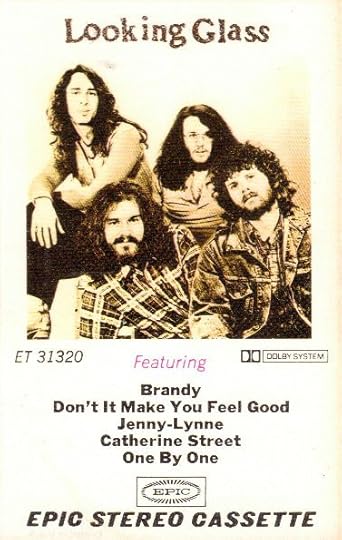 In this time of social distancing, I’ve pondered on the AM network and the radio show the greatest, if obscure, guitar and keyboard solos and the Carpenters, but my random thoughts now lead me to a one-hit-wonder: Looking Glass and the 1972 track that everyone knows, "Brandy." It's a song of the high seas in an unspecified time and place about sailors who find themselves living from port to port.Where: No real information here, indeed the "port on a western bay" is problematic; an eastern bay seems more likely, Rockport or Cape May, the bustling whaling towns of yesteryear.When: We don’t get many pieces to the puzzle here, either. "He came on a summer's day, bringing gifts from far away." So, summer it is. I'm imagining the late 19th Century.Our story so far: "But he made it clear, he couldn't stay. No harbor was his home." He's a man who cannot settle down. Indeed, one cannot be a good sailor on the open seas by settling down. Picture the widow’s walks on the Victorian homes that dot the eastern shoreline. Captains built these manors for their wives who lived there alone (renamed widows walks because the captains were often lost at sea). But this is just a sailor. No wife, no home; instead, "My life, my lover, my lady, is the sea.""But there's a girl in this harbor town, and she works laying whiskey down. They say, 'Brandy, fetch another round.' She serves them whiskey and wine." In these lines, we meet our heroine and learn her name. In the chorus that follows, the sailors talk of her, awed by her looks and saying, "Your eyes could steal a sailor from the sea."Back to the where and when: We get some detail here, if not about the place, but about where the sailor has sailed. It seems, "Brandy wears a braided chain, made of finest silver from the north of Spain." Between 1500 and the late 1800s, the finest silver came from mines in Peru, Bolivia and the American West and was crafted in Cantabria, Spain. Lockets were particularly popular in the 19th century, and Brandy's bears the name of the sailor, the man that Brandy loves. If there was a photograph of the man inside, we would guess the late-1800s, but before the practicality of photography, "lockets" would hold "locks" of hair. Here we can speculate that the relationship was frivolous, as well. There is no mention of either a lock of hair or a photograph. Brandy’s love is aloof at best.The fact that Brandy is a woman serving whiskey and wine suggests that the locale is one of the "western" ports of the Mediterranean where women were able to hold this type of position, but interestingly, Brandy is a name that points to Holland for its roots and so, Brandy's story is one of intrigue as well. How did she find herself in the western Mediterranean?What, then, is the story? Does the sailor revisit time and again? Did he visit just once having a brief though loving relationship with a local barmaid? Is the sailor the memory of a loved one deceased? Indeed, too much time on my hands; I have asked more questions than I answered.
In this time of social distancing, I’ve pondered on the AM network and the radio show the greatest, if obscure, guitar and keyboard solos and the Carpenters, but my random thoughts now lead me to a one-hit-wonder: Looking Glass and the 1972 track that everyone knows, "Brandy." It's a song of the high seas in an unspecified time and place about sailors who find themselves living from port to port.Where: No real information here, indeed the "port on a western bay" is problematic; an eastern bay seems more likely, Rockport or Cape May, the bustling whaling towns of yesteryear.When: We don’t get many pieces to the puzzle here, either. "He came on a summer's day, bringing gifts from far away." So, summer it is. I'm imagining the late 19th Century.Our story so far: "But he made it clear, he couldn't stay. No harbor was his home." He's a man who cannot settle down. Indeed, one cannot be a good sailor on the open seas by settling down. Picture the widow’s walks on the Victorian homes that dot the eastern shoreline. Captains built these manors for their wives who lived there alone (renamed widows walks because the captains were often lost at sea). But this is just a sailor. No wife, no home; instead, "My life, my lover, my lady, is the sea.""But there's a girl in this harbor town, and she works laying whiskey down. They say, 'Brandy, fetch another round.' She serves them whiskey and wine." In these lines, we meet our heroine and learn her name. In the chorus that follows, the sailors talk of her, awed by her looks and saying, "Your eyes could steal a sailor from the sea."Back to the where and when: We get some detail here, if not about the place, but about where the sailor has sailed. It seems, "Brandy wears a braided chain, made of finest silver from the north of Spain." Between 1500 and the late 1800s, the finest silver came from mines in Peru, Bolivia and the American West and was crafted in Cantabria, Spain. Lockets were particularly popular in the 19th century, and Brandy's bears the name of the sailor, the man that Brandy loves. If there was a photograph of the man inside, we would guess the late-1800s, but before the practicality of photography, "lockets" would hold "locks" of hair. Here we can speculate that the relationship was frivolous, as well. There is no mention of either a lock of hair or a photograph. Brandy’s love is aloof at best.The fact that Brandy is a woman serving whiskey and wine suggests that the locale is one of the "western" ports of the Mediterranean where women were able to hold this type of position, but interestingly, Brandy is a name that points to Holland for its roots and so, Brandy's story is one of intrigue as well. How did she find herself in the western Mediterranean?What, then, is the story? Does the sailor revisit time and again? Did he visit just once having a brief though loving relationship with a local barmaid? Is the sailor the memory of a loved one deceased? Indeed, too much time on my hands; I have asked more questions than I answered.
Published on March 23, 2020 06:54
March 19, 2020
March 16, 2020
Ristle-tee Rostle-tee - An Excerpt from Calif.
 I’d spent a lot of time sleeping in the van and never felt squeamish or afraid. Golden Gate Park was filled with hippies and Bohemians, and so I parked the V-dub by the Japanese Tea Garden and tucked myself in. Yet as cheerful and colorful as San Francisco was by day, it was that much more frightening at night. People wandering about, others tripping; an old man peeing on a tree and living in a box. (Who was the free spirit and who was the vagrant?) I heard shots and a siren; someone was in trouble.
I’d spent a lot of time sleeping in the van and never felt squeamish or afraid. Golden Gate Park was filled with hippies and Bohemians, and so I parked the V-dub by the Japanese Tea Garden and tucked myself in. Yet as cheerful and colorful as San Francisco was by day, it was that much more frightening at night. People wandering about, others tripping; an old man peeing on a tree and living in a box. (Who was the free spirit and who was the vagrant?) I heard shots and a siren; someone was in trouble. It wasn’t the pretty ideal we’d all seen in Life magazine, so I took the keys from the glove box and figured I’d get out of there. I headed over the Golden Gate Bridge into Marin County and got back on the coastal road along Point Reyes. The moon was out and shimmering on the water.
It was balmy and still as I got to Bodega Bay. I pulled into a parking lot in the marina. It was the town where Hitchcock filmed The Birds. Across the way was the diner where the woman told Tippi Hedren that the bird attacks were her fault, like she was evil.
I fell asleep as soon as my head hit the pillow and awoke in the morning to a jolt. You couldn’t really see anything shake, but you could see the ripple in the windows, and the gas station attendant was walking as if he were intoxicated, as if the ground was coming out from beneath him. It was an earthquake. You’d think growing up in California you’d be used to them. You never get used to the them. Seconds later, it was over.
 I dressed and made myself presentable, stuck my toothbrush in my pocket and went into the diner. The restrooms were right there in front. I brushed my teeth, washed my face, combed my hair and when I came out, the buzz was still about the tremor. “I’d say 5.3,” a man said. A woman replied, “The big one’s coming.” I sat at the counter and without asking, the waitress brought me coffee.
I dressed and made myself presentable, stuck my toothbrush in my pocket and went into the diner. The restrooms were right there in front. I brushed my teeth, washed my face, combed my hair and when I came out, the buzz was still about the tremor. “I’d say 5.3,” a man said. A woman replied, “The big one’s coming.” I sat at the counter and without asking, the waitress brought me coffee. The diner looked like nothing had changed since the birds were all in a tizzy. The big picture windows looked out onto the bay and the fisheries, but across the inlet there wasn’t a little farm where Mitch lived with his mother and sister. Instead there was an abandoned cannery. I had my breakfast and bought a couple postcards. I sent one to my mother and one to Lori Upton addressed to her parents, although I think she was in Europe. She was, after all, the girl who gave me my kidney, the one that works, as opposed to the one my father gave me, that didn’t. On a dozen levels, I was still in love with her. If you want to know more, you’ll have to read Miles From Nowhere, an incredible work of typing, coming soon from Random House. For now, suffice it to say that I keep in touch. People who make that kind of sacrifice deserve a post card every once in a while. It was a photo of the diner. She really liked The Birds; it was one of her favorite films. I hoped to find the old schoolhouse, and it wasn’t hard. It was just a mile up from the marina; you could see its cupola in the distance. It was abandoned and boarded up. The steps to the front door were missing. I parked by the monkey bars where the crows assembled on the playground, and suddenly, I heard the song:
The butter came out a grizzle-y-grey. Ristle-tee, rostle-tee, now, now, now! The cheese took legs and ran away! Ristle-tee, rostle-tee, hey donny dostle-tee, knickety-knackety, retro-quo-quality, willoby-wallaby, now, now, now!
I got my journal and tried to jot down the words as the tune ran over in my head. I could picture the birds congregating on the jungle gym. The sky was gray with pockets of blue; the bay was filled with shadows. I was thinking about Lori Upton in Venice or in Luxembourg. I could see her standing with a pigeon on her shoulder at Trafalgar Square. I wondered if she could see me sitting here like Tippi Hendren.I asked my wife to wash the floor.
Ristle-tee, rostle-tee, now, now, now! She gave me my hat and she showed me the door!
 Ristle-tee, rostle-tee, hey donny dostle-tee, knickety-knackety, retro-quo-quality, willoby-wallaby, Now, now, now!
Ristle-tee, rostle-tee, hey donny dostle-tee, knickety-knackety, retro-quo-quality, willoby-wallaby, Now, now, now!I got back in the van and drove down the hill; the birds were chasing the children from the schoolyard. Back on the highway, I was tortured by the lyrics. “She cooked the [blank] in her Daddy’s old shoe.” What did she cook? I almost ran off the road; knickity-knackity, now, now, now. I drove until I got to Eureka.
Published on March 16, 2020 05:19
March 11, 2020
CASE CLOSED
 Romeo and Juliet by William Shakespeare. Othello: Shakespeare. Macbeth: Shake. No, no and no: Arthur Brook/Ovid (R+J); Hecatommithi, a novella by Cinthio (Othello); Holinshed's Chronicles ("The Scottish Play") - but if you said so, you'd sound like an idiot. Because you would be. According to Ecclesiastes, there is nothing new under the sun, so frankly, shut the hell up already about Led Zeppelin. The allegations have indeed brought lawsuits, mostly (five to be exact) settled out of court discretely with the evidence truncated, and in the most famous case, "Whole Lotta Love," the song credits amended to include Willie Dixon, who claimed that Robert Plant used lyrics from his song "You Need Love." Here we go: "You've got yearnin' and I got burnin'/ Baby you look so sweet and cunnin'./ Baby way down inside, woman you need love." Willie Dixon obviously was the first person ever to say what guys say in the heat of the moment (wait, did I just steal that from Asia?).
Romeo and Juliet by William Shakespeare. Othello: Shakespeare. Macbeth: Shake. No, no and no: Arthur Brook/Ovid (R+J); Hecatommithi, a novella by Cinthio (Othello); Holinshed's Chronicles ("The Scottish Play") - but if you said so, you'd sound like an idiot. Because you would be. According to Ecclesiastes, there is nothing new under the sun, so frankly, shut the hell up already about Led Zeppelin. The allegations have indeed brought lawsuits, mostly (five to be exact) settled out of court discretely with the evidence truncated, and in the most famous case, "Whole Lotta Love," the song credits amended to include Willie Dixon, who claimed that Robert Plant used lyrics from his song "You Need Love." Here we go: "You've got yearnin' and I got burnin'/ Baby you look so sweet and cunnin'./ Baby way down inside, woman you need love." Willie Dixon obviously was the first person ever to say what guys say in the heat of the moment (wait, did I just steal that from Asia?). Sorry, I get it, intellectual property, blah blah blah, but this is simply fucking to music - the improv of sex - and it doesn't belong to Plant, nor does it belong to Dixon. The Small Faces' Steve Marriot has a far better case with Plant's lifted stylings, but push to shove reality: Romeo and Juliet: Shakespeare; "Whole Lotta Love:" Zeppelin. This (and only this) is the sexiest, dirtiest song ever recorded and not Willie Dixon's Song of the South rendition. Muddy Waters' take, bluesy and incredible as it is, holds nothing on Zeppelin's. (Not a soul, by the way, has challenged John Williams for lifting the Star Wars Theme straight from Erich Wolfgang Korngold's incidental music for King's Row. Why? Because Korngold's original pales in comparison.)
Sorry, I get it, intellectual property, blah blah blah, but this is simply fucking to music - the improv of sex - and it doesn't belong to Plant, nor does it belong to Dixon. The Small Faces' Steve Marriot has a far better case with Plant's lifted stylings, but push to shove reality: Romeo and Juliet: Shakespeare; "Whole Lotta Love:" Zeppelin. This (and only this) is the sexiest, dirtiest song ever recorded and not Willie Dixon's Song of the South rendition. Muddy Waters' take, bluesy and incredible as it is, holds nothing on Zeppelin's. (Not a soul, by the way, has challenged John Williams for lifting the Star Wars Theme straight from Erich Wolfgang Korngold's incidental music for King's Row. Why? Because Korngold's original pales in comparison.)More importantly, this writer's purview is not that Led Zeppelin (Plant in particular) can claim intellectual ownership of lyrics like those in "The Lemon Song," which clearly reconstruct "Killing Floor" by Chester Burnett (a.k.a. Howlin' Wolf), but that lawsuits and purported plagiarism are absurd when one analyzes both the history of the blues, and its construct. If Plant indeed needs to include Howlin' Wolf in the credits to "The Lemon Song," then Howlin' Wolf must also qualify "Killing Floor" by including Robert Johnson. By extension, Led Zeppelin, Howlin' Wolf and Robert Johnson must re-credit their sexually explicit "lemon" tracks with the addition of Joe Williams for his 1929 penned tune, "I Want it Awful Bad," which is, if not the original, at least the oldest existing lyrics to take the lemon in hand (so to speak): "You squeezed my lemon,/ Caused my juice to run." To emphasize the details: not Zeppelin, not Burnett, not Johnson, not Roosevelt Sykes ("She Squeezed My Lemon"), not Memphis Minnie nor Sonny Boy Williamson can lay claim to the lyrics of Joe Williams.

Equally compelling is the "Killing Floor" reference. The killing floor is classic/timeless blues phrasing that initially referred to the slaughterhouse. After the Civil War, many black migrants found work in the slaughterhouses on the "killing floor," a term that came to mean hitting rock bottom. Plant's use of the lyric as a white British lyricist in "The Lemon Song" is ridiculous, but again, it is far from plagiarism.
The point is simple. So much energy and clever naysaying on the web and in print goes into proving that Plant and Page plagiarized the blues greats, overlooking the inherent plagiarism in the genre's construct: blues borrows.
By the way, there really was a William Shakespeare who wrote 37 plays and 154 sonnets. Not a soul among us reads Sir Francis Bacon's Hamlet.
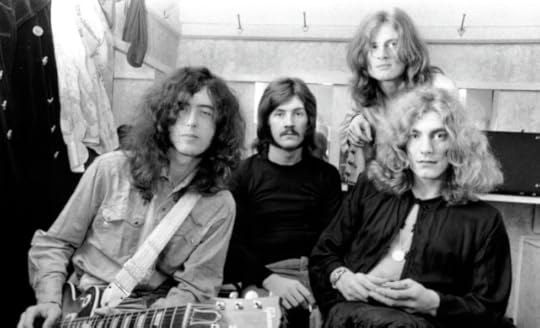
Published on March 11, 2020 11:46
March 10, 2020
March 8, 2020
Beach Boys - Phase 3
 Discovering The Beach Boys is like falling into a black hole, emerging in a convoluted alternate universe of surf hits, novelty albums, endless compilations, abandoned projects, recycled themes and the greatest LP ever made with a horrible cover. Broadly speaking, the band's output can be classified into three phases (not unlike The Beatles): the early hits (1962 to 1965, a period that saw the band produce 10 studio albums, including some of their most iconic songs); Pet Sounds (released in May 1966); and post-Pet Sounds (a period that started with the release of "Good Vibrations" in October 1966 taking in death, addiction and Charles Manson, not to mention critical and commercial failure along the way).
Discovering The Beach Boys is like falling into a black hole, emerging in a convoluted alternate universe of surf hits, novelty albums, endless compilations, abandoned projects, recycled themes and the greatest LP ever made with a horrible cover. Broadly speaking, the band's output can be classified into three phases (not unlike The Beatles): the early hits (1962 to 1965, a period that saw the band produce 10 studio albums, including some of their most iconic songs); Pet Sounds (released in May 1966); and post-Pet Sounds (a period that started with the release of "Good Vibrations" in October 1966 taking in death, addiction and Charles Manson, not to mention critical and commercial failure along the way).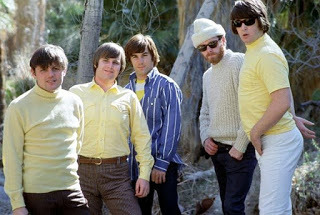 The accepted narrative is that this period saw Wilson spectacularly fall from grace following the high watermark of Pet Sounds, abandoning SMiLE in favor of pale copies of what SMiLE would have been, as drugs, paranoia, stress and underlying mental health issues turned the Beach Boy genius into a recluse. The truth is that the post-Pet era saw The Beach Boys produce some of the oddest, tenderest, most delicate and even funkiest music of their reign; a period that beckons re-examination. In the ashes were flowers and indeed, brilliance.
The accepted narrative is that this period saw Wilson spectacularly fall from grace following the high watermark of Pet Sounds, abandoning SMiLE in favor of pale copies of what SMiLE would have been, as drugs, paranoia, stress and underlying mental health issues turned the Beach Boy genius into a recluse. The truth is that the post-Pet era saw The Beach Boys produce some of the oddest, tenderest, most delicate and even funkiest music of their reign; a period that beckons re-examination. In the ashes were flowers and indeed, brilliance.The obvious place to start is with "Good Vibrations," a towering pop symphony that manages to be both wildly inventive — a mixture of sawing cellos, Hammond organ, jaw harp, theremin, tack piano and otherworldly harmonies — utterly ecstatic and consummately addictive. It is one of two completed SMiLE tracks that appeared on Smiley Smile, alongside the grandiloquent "Heroes and Villains." These two songs, one might think, would be enough in themselves to make Smiley Smile a welcome addition to the Beach Boys' catalogue. And yet it remains one of the least popular albums in the band's oeuvre, criticized largely for what it isn’t — SMiLE — than appreciated for what it is: a decent if somewhat limited example of late 60s pop that leans on the avant-garde without falling headlong into the experimental abyss. Alongside these two tracks Smiley Smile, which was recorded in six weeks at Brian's makeshift home studio after work on SMiLE was halted, includes basic, re-recorded versions of SMiLE songs "Fire" (which appears on Smiley Smile as "Fall Breaks and Back to Winter (W. Woodpecker Symphony"), "Vegetables," "Wind Chimes" and "Wonderful," as well as a handful of new tracks, some of which — such as "She's Goin' Bald — had their roots in the SMiLE sessions, while others (including "Gettin' Hungry" and "Little Pad") were totally new. Of these, "With Me Tonight" is the pick of the bunch.
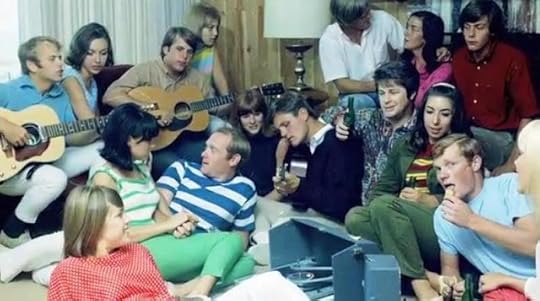 Wild Honey, the Beach Boys' thirteenth studio album, was released in December 1967, just three months after Smiley Smile, a remarkably quick turnaround for a band who had spent six months recording "Good Vibrations" alone. Carl Wilson apparently called Wild Honey "music for Brian to cool out by," while others have claimed the album was an attempt to regroup as a living, breathing rock and roll band.
Wild Honey, the Beach Boys' thirteenth studio album, was released in December 1967, just three months after Smiley Smile, a remarkably quick turnaround for a band who had spent six months recording "Good Vibrations" alone. Carl Wilson apparently called Wild Honey "music for Brian to cool out by," while others have claimed the album was an attempt to regroup as a living, breathing rock and roll band.Typical of this charm is the title track, a barnstorming soul number with an impassioned, beautifully flawed vocal from Carl Wilson, which could hardly be further away from his angelic perfection on "God Only Knows." Other notables on the album include "Darlin'"; "Here Comes The Night," and "Mama Says," a one-minute a Capella vocal originally intended as a bridge section on SMiLE's "Vega-Tables."
 From Friends (1968), two notables are from Brian, and just Brian, in a return to Pet Sounds days. "Passing By," which floats by on a cloud of wordless harmonies, and "Busy Doin' Nothin," a bossa nova shuffle with elegant flashes of acoustic guitar in which Wilson relates his day-to-day business ("The afternoon was filled up with phone calls/ what a hot sticky day") and gives detailed step-by-step directions to his Bel-Air mansion. It sounds effortless, a song Wilson tossed off in an afternoon to avoid cleaning his sandpit, but impressively so, a lazy summer's sigh transposed to vinyl. At the same time there is an immense sadness at the song's core, the sound of Wilson fiddling around, alone, in his California manse while his musical career turns to pot and his motivation slides.
From Friends (1968), two notables are from Brian, and just Brian, in a return to Pet Sounds days. "Passing By," which floats by on a cloud of wordless harmonies, and "Busy Doin' Nothin," a bossa nova shuffle with elegant flashes of acoustic guitar in which Wilson relates his day-to-day business ("The afternoon was filled up with phone calls/ what a hot sticky day") and gives detailed step-by-step directions to his Bel-Air mansion. It sounds effortless, a song Wilson tossed off in an afternoon to avoid cleaning his sandpit, but impressively so, a lazy summer's sigh transposed to vinyl. At the same time there is an immense sadness at the song's core, the sound of Wilson fiddling around, alone, in his California manse while his musical career turns to pot and his motivation slides.Despite the ever dwindling grasp on reality, how do we so easily dismiss Sunflower, or indeed, Surf's Up, the last three songs of which have SMiLE written all over them. "A Day in the Life of a Tree" is a parodist masterpiece, deeply touching and insightful, while "'Til I Die,'" is a haunting, fatalistic piece of pop surrealism; and I have probably said enough about the title track to serve as tribute. It's always the influences of others that intrigue me. John Wetton of King Crimson, Roxy and Uriah Heap named Surf's Up his favorite prog album of all-time, stating that "Surf's Up was a revelation. This collection from the iconic California surf-pop band shifted my parameters, blurring all the boundaries of my musical vocabulary. I marveled at Van Dyke Parks' mind-expanding poetry of the title track, wallowing in the glorious harmonies. Both composition and production absolutely floored me. The whole experience was my nirvana. And the cover? Mega prog!"
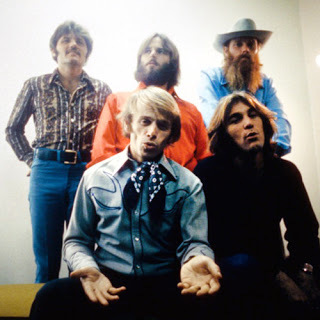 One's true admiration of Wilson's genius hopes to justify even the most flawed or troubled moments, or attempts to find the brilliance in the most jaded, drug-addled tracks; alas, they’re often not there. Brian's symptoms were real and not the stuff of YA, but if Holland is only a glimmer of Pet Sounds, then Beatles For Sale is but a glimmer of Help! This one, from an influence standpoint is Elvis Costello's muse, and this writer discovered it only because I liked the cover. Holland, as so many others have noted, is the great pendulum in the Beach Boys' post-Pet Sounds trajectory, and this writer is guilty of simply forgetting about The Boys from there onward, always looking back. But for album No. 19, The Beach Boys decided a change of scenery would do the band good and traveled to the Netherlands (transporting an entire recording studio with them) hoping it might spark inspiration in Brian, who was almost entirely absent for the Carl and the Passions LP. The plan pretty much failed. Brian only cared about his Mount Vernon and Fairway (A Fairy Tale) EP, and the album they submitted to Reprise was rejected for not having a commercial single. It worked to everyone's advantage, though, in that the band finished "Sail On Sailor," one of the best 70s Beach Boys songs, and one of the most collaborative - it has input from both Brian and Van Dyke Parks, some lyrical rewrites from manager Jack Reiley, and a lead vocal from Blondie Chaplin.
One's true admiration of Wilson's genius hopes to justify even the most flawed or troubled moments, or attempts to find the brilliance in the most jaded, drug-addled tracks; alas, they’re often not there. Brian's symptoms were real and not the stuff of YA, but if Holland is only a glimmer of Pet Sounds, then Beatles For Sale is but a glimmer of Help! This one, from an influence standpoint is Elvis Costello's muse, and this writer discovered it only because I liked the cover. Holland, as so many others have noted, is the great pendulum in the Beach Boys' post-Pet Sounds trajectory, and this writer is guilty of simply forgetting about The Boys from there onward, always looking back. But for album No. 19, The Beach Boys decided a change of scenery would do the band good and traveled to the Netherlands (transporting an entire recording studio with them) hoping it might spark inspiration in Brian, who was almost entirely absent for the Carl and the Passions LP. The plan pretty much failed. Brian only cared about his Mount Vernon and Fairway (A Fairy Tale) EP, and the album they submitted to Reprise was rejected for not having a commercial single. It worked to everyone's advantage, though, in that the band finished "Sail On Sailor," one of the best 70s Beach Boys songs, and one of the most collaborative - it has input from both Brian and Van Dyke Parks, some lyrical rewrites from manager Jack Reiley, and a lead vocal from Blondie Chaplin. While "Steamboat" is a bit slow and overly contemplative, its production is endlessly fascinating: so many different pieces come together to make the whole. Somehow, defying all odds, even Mike Love manages to be a positive part of the LP. While his part of the "California Saga," "Big Sur," while a Neil Young ripoff, is as good a melody as anything Mike ever wrote. The rest of the "California Saga" is mostly Al Jardine's, the third segment top notch (the second has some ridiculous narration in the middle, but what can you do?).
Don’t get me wrong, if your Beach Boys collection contains their greatest hits, Pet Sounds and 45 versions of "Surf's Up" and "Heroes and Villains," you’re good to go, but given the time, like Burgess Meredith in The Twilight Zone, check out The Boys’ phase 3 – at least through Holland.
Published on March 08, 2020 16:47




